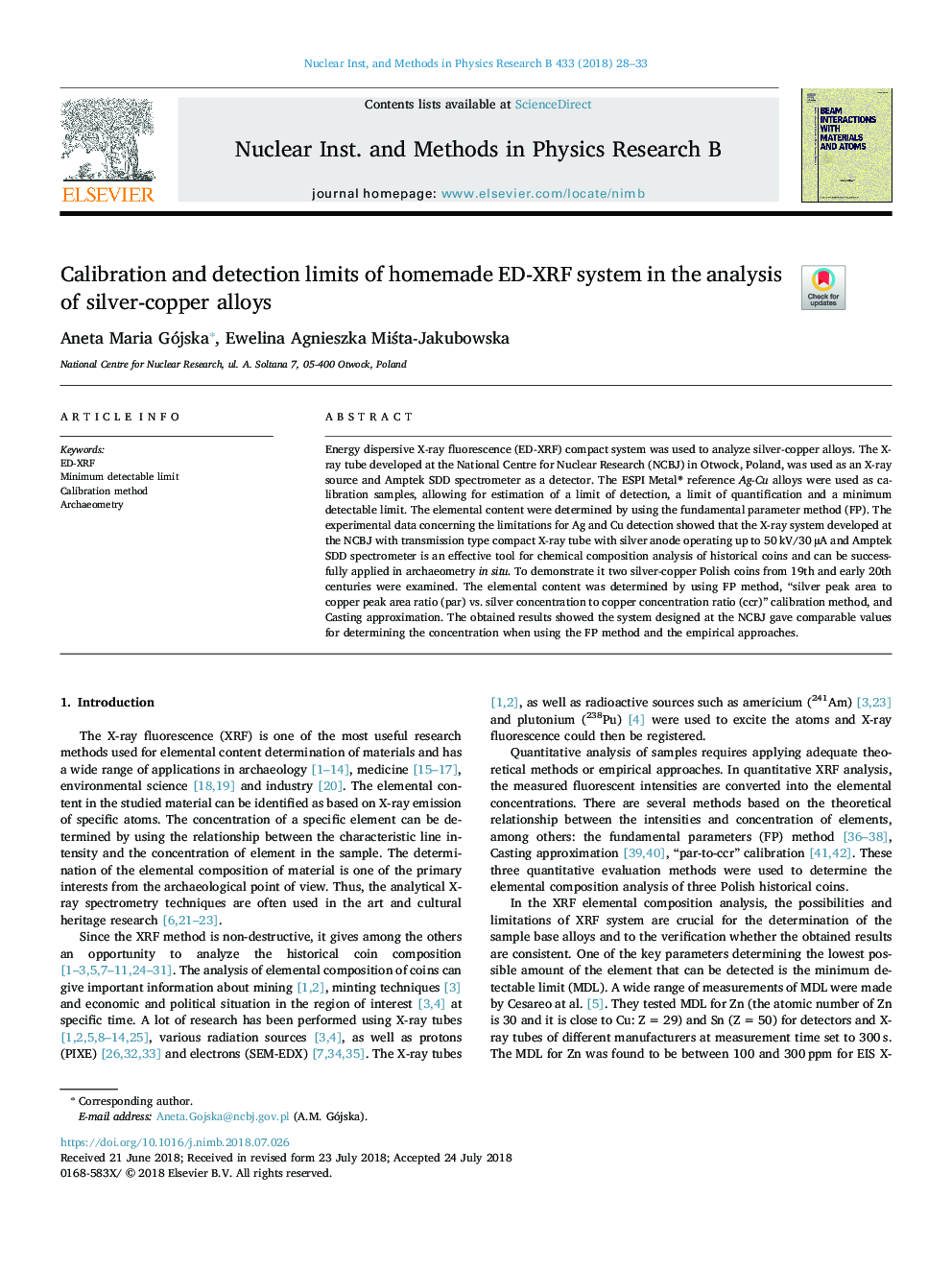| Article ID | Journal | Published Year | Pages | File Type |
|---|---|---|---|---|
| 8039021 | Nuclear Instruments and Methods in Physics Research Section B: Beam Interactions with Materials and Atoms | 2018 | 6 Pages |
Abstract
Energy dispersive X-ray fluorescence (ED-XRF) compact system was used to analyze silver-copper alloys. The X-ray tube developed at the National Centre for Nuclear Research (NCBJ) in Otwock, Poland, was used as an X-ray source and Amptek SDD spectrometer as a detector. The ESPI Metal® reference Ag-Cu alloys were used as calibration samples, allowing for estimation of a limit of detection, a limit of quantification and a minimum detectable limit. The elemental content were determined by using the fundamental parameter method (FP). The experimental data concerning the limitations for Ag and Cu detection showed that the X-ray system developed at the NCBJ with transmission type compact X-ray tube with silver anode operating up to 50â¯kV/30â¯ÂµA and Amptek SDD spectrometer is an effective tool for chemical composition analysis of historical coins and can be successfully applied in archaeometry in situ. To demonstrate it two silver-copper Polish coins from 19th and early 20th centuries were examined. The elemental content was determined by using FP method, “silver peak area to copper peak area ratio (par) vs. silver concentration to copper concentration ratio (ccr)” calibration method, and Casting approximation. The obtained results showed the system designed at the NCBJ gave comparable values for determining the concentration when using the FP method and the empirical approaches.
Keywords
Related Topics
Physical Sciences and Engineering
Materials Science
Surfaces, Coatings and Films
Authors
Aneta Maria Gójska, Ewelina Agnieszka MiÅta-Jakubowska,
